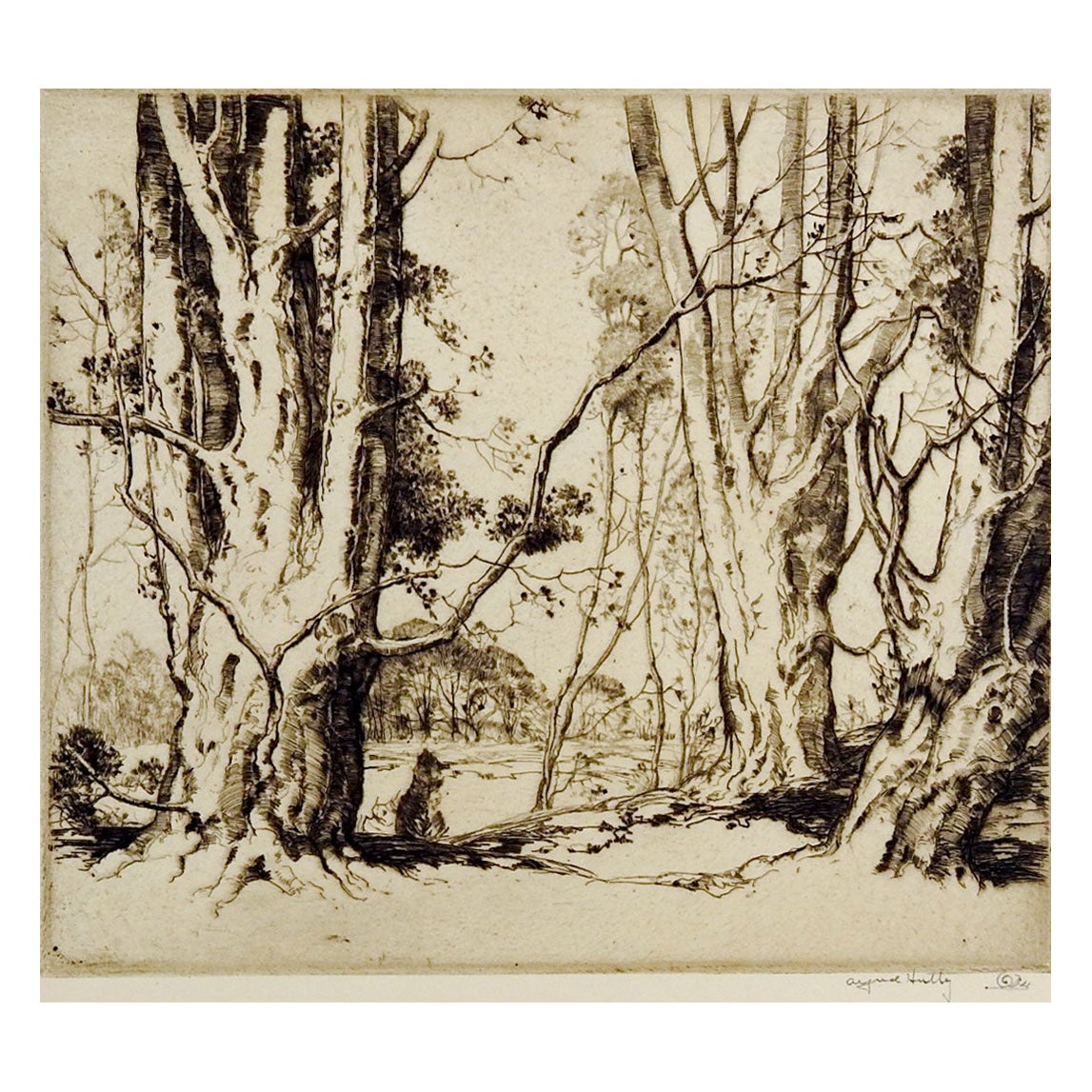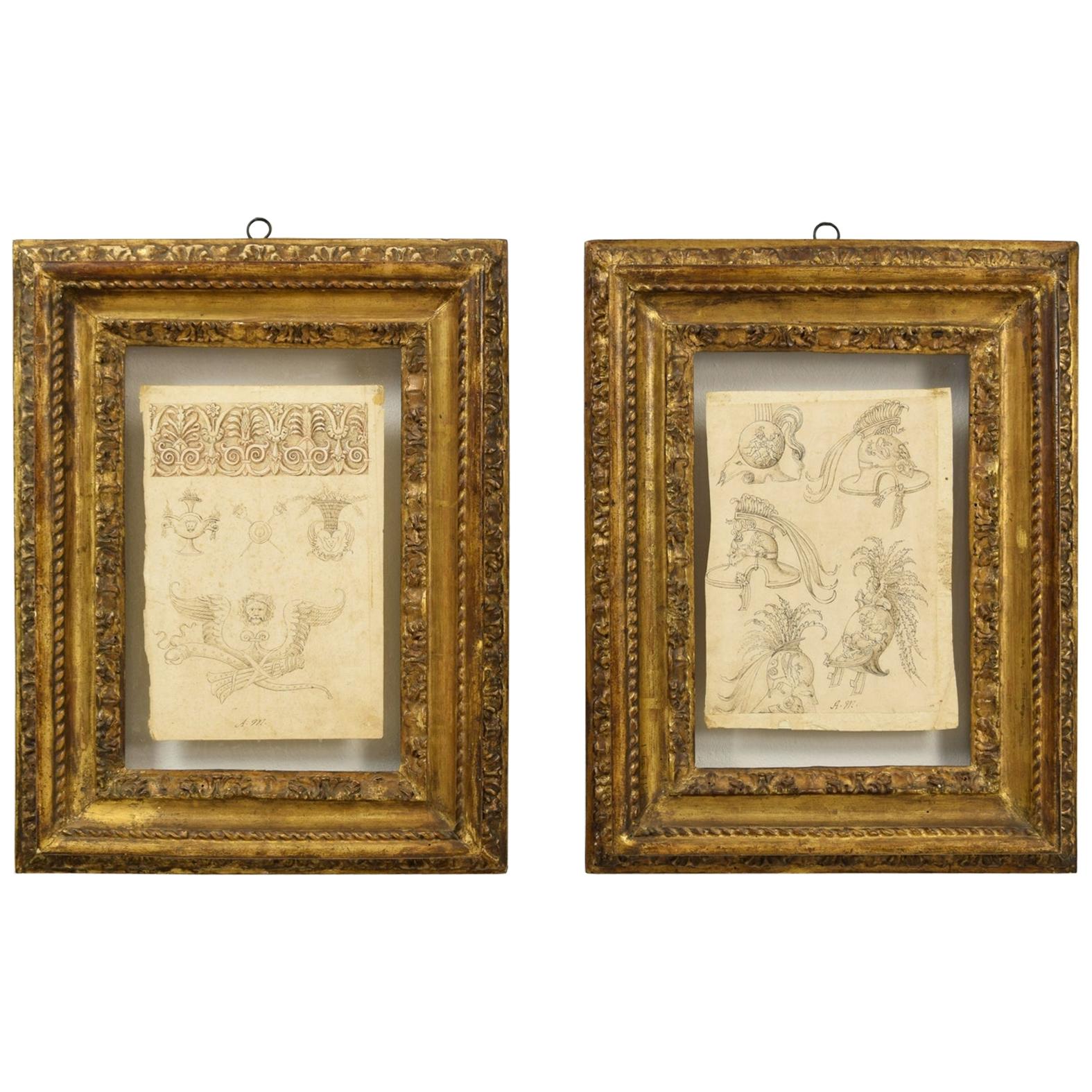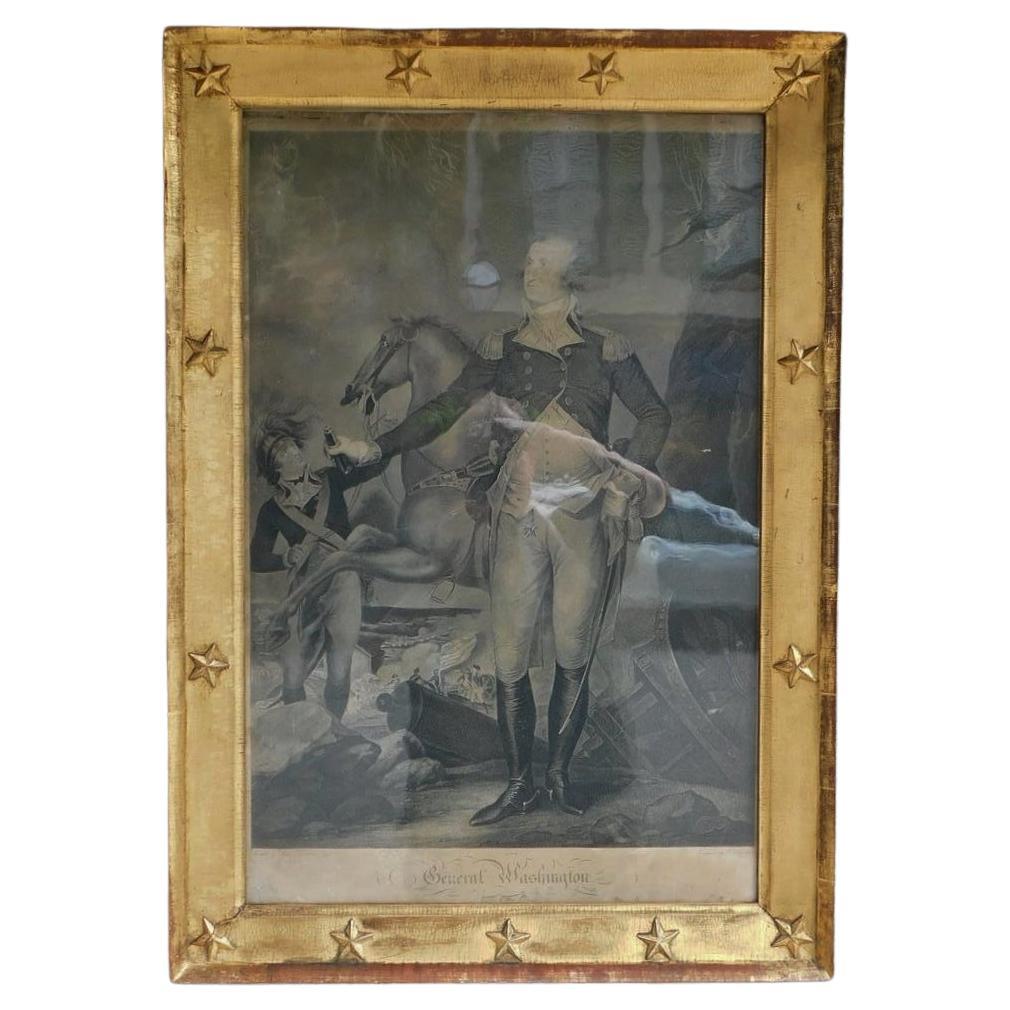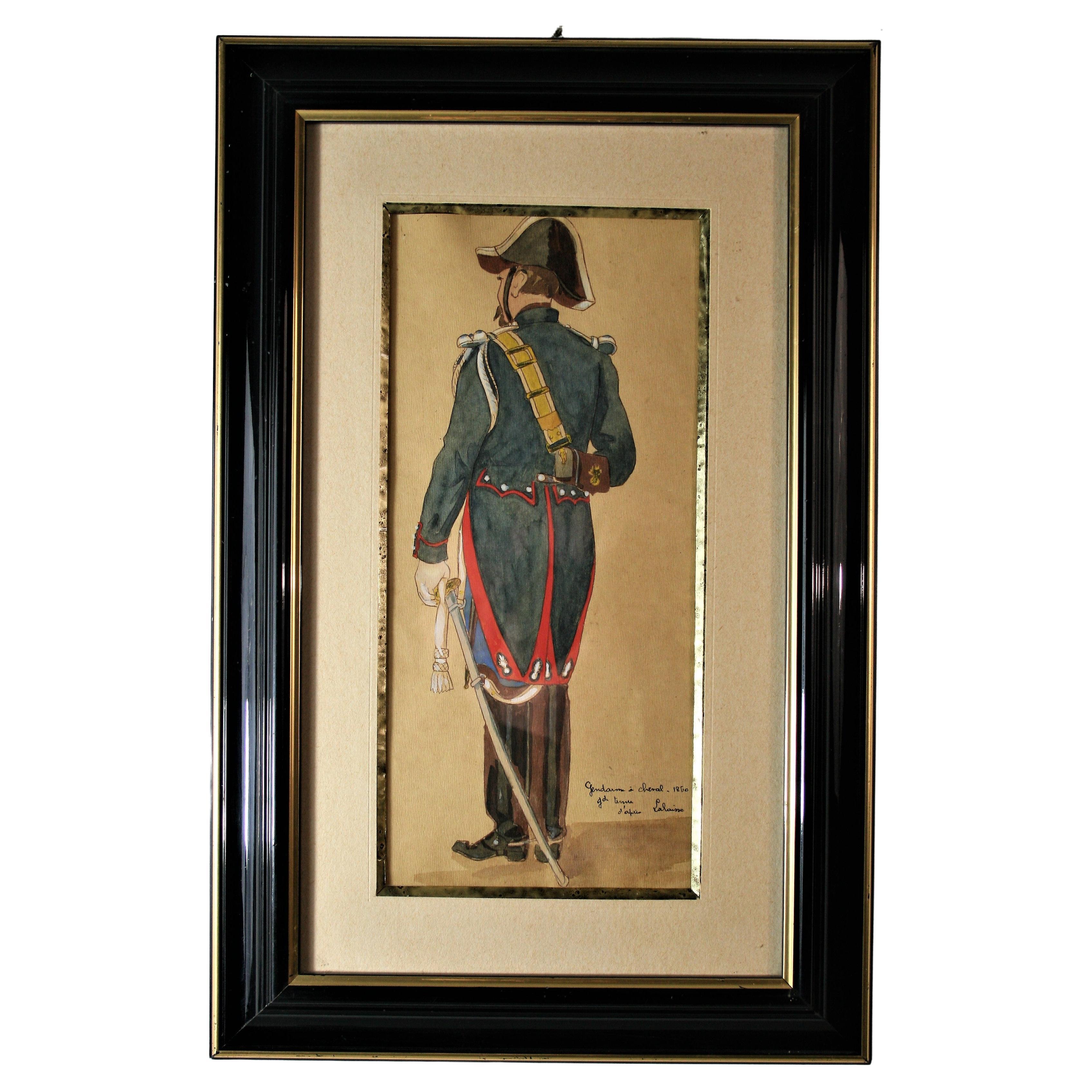Items Similar to American Dry Point Engraved Etching Italian House on Hill Side, A. Hutty C 1920
Want more images or videos?
Request additional images or videos from the seller
1 of 7
American Dry Point Engraved Etching Italian House on Hill Side, A. Hutty C 1920
About the Item
American dry point engraved landscape etching Italian House on Hill Side, Alfred H. Hutty, Early 20th century
- Creator:Alfred Hutty (Artist)
- Dimensions:Height: 9 in (22.86 cm)Width: 11.25 in (28.58 cm)Depth: 1 in (2.54 cm)
- Style:Modern (Of the Period)
- Materials and Techniques:
- Place of Origin:
- Period:
- Date of Manufacture:Circa 1920
- Condition:Wear consistent with age and use.
- Seller Location:Hollywood, SC
- Reference Number:
About the Seller
4.7
Vetted Seller
These experienced sellers undergo a comprehensive evaluation by our team of in-house experts.
Established in 1970
1stDibs seller since 2010
398 sales on 1stDibs
Typical response time: 10 hours
- ShippingRetrieving quote...Ships From: Hollywood, SC
- Return PolicyThis item cannot be returned.
More From This SellerView All
- American Steel Engraving of George Washington in Orig. Gilt Starred Frame C 1800By John TrumbullLocated in Hollywood, SCAmerican Steel Engraving of General George Washington "Before the Battle of Trenton" By John Trumbull Under Original Wavy Glass and Thirteen Starred Gilt Frame, Early 19th Century. T...Category
Antique Early 1800s American American Colonial Drawings
MaterialsSteel
- American Water Color Brown Headed Nuthatch Perched on Pine Tree E. Dingle C 1950Located in Hollywood, SCAmerican water color brown headed nuthatch perched on pine tree matted under glass in a silver gilt frame. Edward Von Siebold Dingle, mid-20th century.Category
Vintage 1950s American Modern Paintings
MaterialsSilver Leaf
- American Oil on Board Landscape with Young Lady and Rabbit, Circa 1820Located in Hollywood, SCAmerican oil on board landscape of young lady standing by rabbit in foreground with the original molded pine frame and wood backing. Early 19th century.Category
Antique 1820s American American Classical Paintings
MaterialsPine, Paint
- American Oil on Canvas Portrait of Seated Young Lady, NY, Circa 1850Located in Hollywood, SCAmerican oil on canvas portrait of seated young lady in the original gilt wood floral flame, New York, Mid-19th century.Category
Antique 1850s American American Empire Paintings
MaterialsGesso, Canvas, Wood, Paint
- American Oil on Canvas Ship Captain with Spyglass in Orig, Gilt Frame, C. 1840Located in Hollywood, SCAmerican portrait oil on canvas of a young ship captain holding a spyglass with a sailing ship, crew in rowboat, and gulls in lower background mounted in the original decorative gilt...Category
Antique 1840s American American Empire Paintings
MaterialsPaint, Giltwood, Wood, Canvas, Gesso
- American Oil on Canvas of Two Masted Schooner Yacht under Full Sail 20th CenturyLocated in Hollywood, SCAmerican nautical oil on canvas of two masted schooner yacht under full sail with American flag, crew on deck, second vessel in distance, and mounted in a silver gilt frame, Early 20...Category
Vintage 1920s American American Classical Picture Frames
MaterialsPaint, Wood, Canvas
You May Also Like
- Vintage 1920s Beverly Beeches by Alfred Hutty EtchingBy Alfred HuttyLocated in Seguin, TXCirca 1920's etching on paper of Beverly Beeches, England by Alfred Hutty (1877-1954) American. Signed and titled in pencil lower margin, edition of 75. U...Category
Early 20th Century American Arts and Crafts Prints
MaterialsPaper
- 17th Century, Pair of Italian Ink Drawings on Paper with Studies for GrotesquesLocated in IT17th century, pair of ink drawings on paper with studies for grotesques, friezes and helmets. Painter of central Italy of the 17th century, signed with monogram “A.M.”. Measurements: cm L 45.5 x H 59.5 x 5.5; cm 22 x 33 / cm L 46.5 x H 59 x 5.5; cm 22.5 x 31.5 The pair of sheets, in good condition, is framed by antique frames in carved and gilded wood. They show some china studies with some studies for different subjects. Specifically, the first sheet represents the design of a frieze of Renaissance taste under which are some studies probably referring to a family coat of arms. Below the center is a monogram “A.M.”. The sheet is also worked on the back in which are drawn some articulated elements of decoration in the style of the Renaissance grotesque...Category
Antique 17th Century Italian Baroque Drawings
MaterialsPaper
- Antique Foster Brothers Framed Etching of Cathedral after K. Conant, circa 1910By Foster BrothersLocated in Big Flats, NYAn antique framed print of "Cathedral from the Place-Haute-Vieille-Tour, Rouen" etching by Mr. Kenneth Conant depicts a street scene, en verso label reads "Reproduced from a pencil sketch by Mr. Kenneth Conant, Collection of Harold W. Bell, Esq. Published by Foster Bros., 4 Park Square, Boston...Category
Early 20th Century American Drawings
MaterialsMetal
- James Jacques Joseph Tissot "Soirée d'été" 'Summer Evening' Etching & Dry PointBy James TissotLocated in Los Angeles, CAA fine French 19th century etching and drypoint Titled "Soirée d'été" (Summer Evening) by Jacques Joseph Tissot (French, 1836-1902) depicting Mrs. Kathleen Newton resting on a lounge chair. Signed and dated (l/l): J.J. Tissot, 1881 in the plate. Under the mat, the front of the sheet inscribed in pencil with a '1' in a circle, the verso of the sheet with old price inscription "450-" in pencil. Circa: 1881-1882. Measures: Plate Height: 9 inches (22.9 cm) Plate Width: 15 1/2 inches (39.4 cm) Sheet Height: 14 1/2 inches (36.8 cm) Sheet Width: 20 5/8 inches (52.4 cm) Frame Height: 19 inches (48.3 cm) Frame Width: 24 1/2 inches (62.2 cm) Frame Depth: 1 1/8 inches (2.9 cm) Literature: Wentworth 56. Note: Tissot's from 1881 is said to depict his lover, the Irish divorcee Mrs. Kathleen Newton, resting on a lounge chair. Provenance: Private collection, Los Angeles, California Jacques Joseph Tissot (French, 15 October 1836 – 8 August 1902), Anglicized as James Tissot, was a French painter and illustrator. He was a successful painter of Paris society before moving to London in 1871. He became famous as a genre painter of fashionably dressed women shown in various scenes of everyday life. He also painted scenes and characters from the Bible. Jacques Tissot was born in the city of Nantes in France and spent his early childhood there. His father, Marcel Théodore Tissot, was a successful drapery merchant. His mother, Marie Durand, assisted her husband in the family business and designed hats. A devout Catholic, Tissot's mother instilled pious devotion in the future artist from a very young age. Tissot's youth spent in Nantes likely contributed to his frequent depiction of shipping vessels and boats in his later works. The involvement of his parents in the fashion industry is believed to have been an influence on his painting style, as he depicted women's clothing in fine detail. By the time Tissot was 17, he knew he wanted to pursue painting as a career. His father opposed this, preferring his son to follow a business profession, but the young Tissot gained his mother's support for his chosen vocation. Around this time, he began using the given name of James. By 1854 he was commonly known as James Tissot; he may have adopted it because of his increasing interest in everything English. In 1856 or 1857, Tissot travelled to Paris to pursue an education in art. While staying with a friend of his mother, painter Elie Delaunay, Tissot enrolled at the Ecole des Beaux-Arts to study in the studios of Hippolyte Flandrin and Louis Lamothe. Both were successful Lyonnaise painters who moved to Paris to study under Jean-Auguste-Dominique Ingres. Lamothe provided the majority of Tissot's studio education, and the young artist studied on his own by copying works at the Louvre, as did most other artists of the time in their early years. Around this time, Tissot also made the acquaintance of the American James McNeill Whistler, and French painters Edgar Degas (who had also been a student of Lamothe and a friend of Delaunay), and Édouard Manet. In 1859, Tissot exhibited in the Paris Salon for the first time. He showed five paintings of scenes from the Middle Ages, many depicting scenes from Goethe's Faust. These works show the influence in his work of the Belgian painter Henri Leys (Jan August Hendrik Leys), whom Tissot had met in Antwerp earlier that same year. Other influences include the works of the German painters Peter Von Cornelius and Moritz Retzsch. After Tissot had first exhibited at the Salon and before he had been awarded a medal, the French government paid 5,000 francs for his depiction of The Meeting of Faust and Marguerite in 1860, with the painting being exhibited at the Salon the following year, together with a portrait and other paintings. Émile Péreire supplied Tissot's painting Walk in the Snow for the 1862 international exhibition in London; the next year three paintings by Tissot were displayed at the London gallery of Ernest Gambart. In about 1863, Tissot suddenly shifted his focus from the medieval style to the depiction of modern life through portraits. During this period, Tissot gained high critical acclaim, and quickly became a success as an artist. Like contemporaries such as Alfred Stevens and Claude Monet, Tissot also explored Japonisme, including Japanese objects and costumes in his pictures and expressing style influence. Degas painted a portrait of Tissot from these years (Metropolitan Museum of Art, New York), in which he is sitting below a Japanese screen hanging on the wall. Still on Top, 1873 Tissot fought in the Franco-Prussian War as part of the improvised defense of Paris, joining two companies of the Garde Nationale and later as part of the Paris Commune. His 1870 painting La Partie Carrée (The Foursome) evoked the period of the French revolution. Either because of the radical political associations related to the Paris Commune (which he was believed to have joined mostly to protect his own belongings rather than for shared ideology), or because of better opportunities, he left Paris for London in 1871. During this period, Seymour Haden helped him to learn etching techniques. Having already worked as a caricaturist for Thomas Gibson Bowles, the owner of the magazine Vanity Fair, as well as exhibited at the Royal Academy, Tissot arrived with established social and artistic connections in London. Tissot used...Category
Antique Late 19th Century French Victorian Drawings
MaterialsGlass, Wood, Paper
- " Gendarme On Horseback " After Lalaisse Hand-Painted Watercolor 20th CenturyLocated in Beuzevillette, FRAnonymous watercolor and drawing "Gendarme on horseback" after the work of the painter Lalaisse which is part of the collection of watercolors "Troops on horseback" dating from 1859....Category
Early 20th Century French Drawings
MaterialsPaper
- Henri Pille "the artist's studio", Ink Pen on Paper, 19th CenturyLocated in Beuzevillette, FRDrawing by Charles-Henri Pille known as Henri Pille "L'Atelier d'artiste", pen drawing on paper. In an interior with Renaissance furniture, a painter rummages in a large Renaissance ...Category
Antique 1880s Drawings
MaterialsPaper
Recently Viewed
View AllMore Ways To Browse
Wall Photograph
Vintage White Cotton
Tapestry Antique Furniture
Antique Print Set
Elegant Coats
Green Coat
1950s Silk
Antique French Roses
Set Of Antique Prints
Wooden Wall Decorations
Large Wall Canvas
Vintage Button Designs
Gold Stem
Large Retro Wall Art
Rose W
Antique House Decoration
Antique House Decorations
Framed Wall Panels





